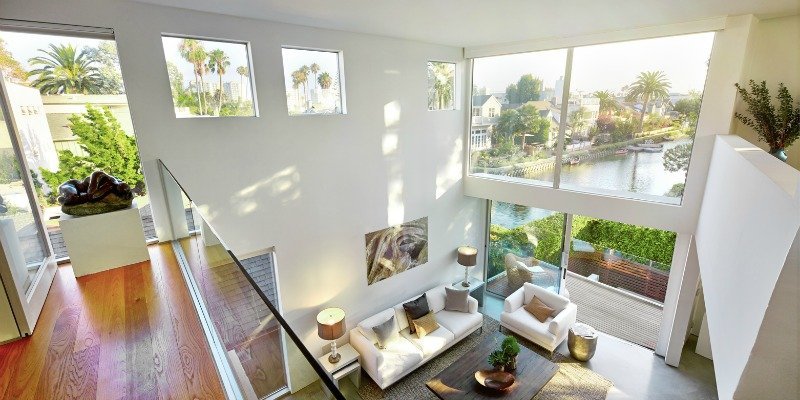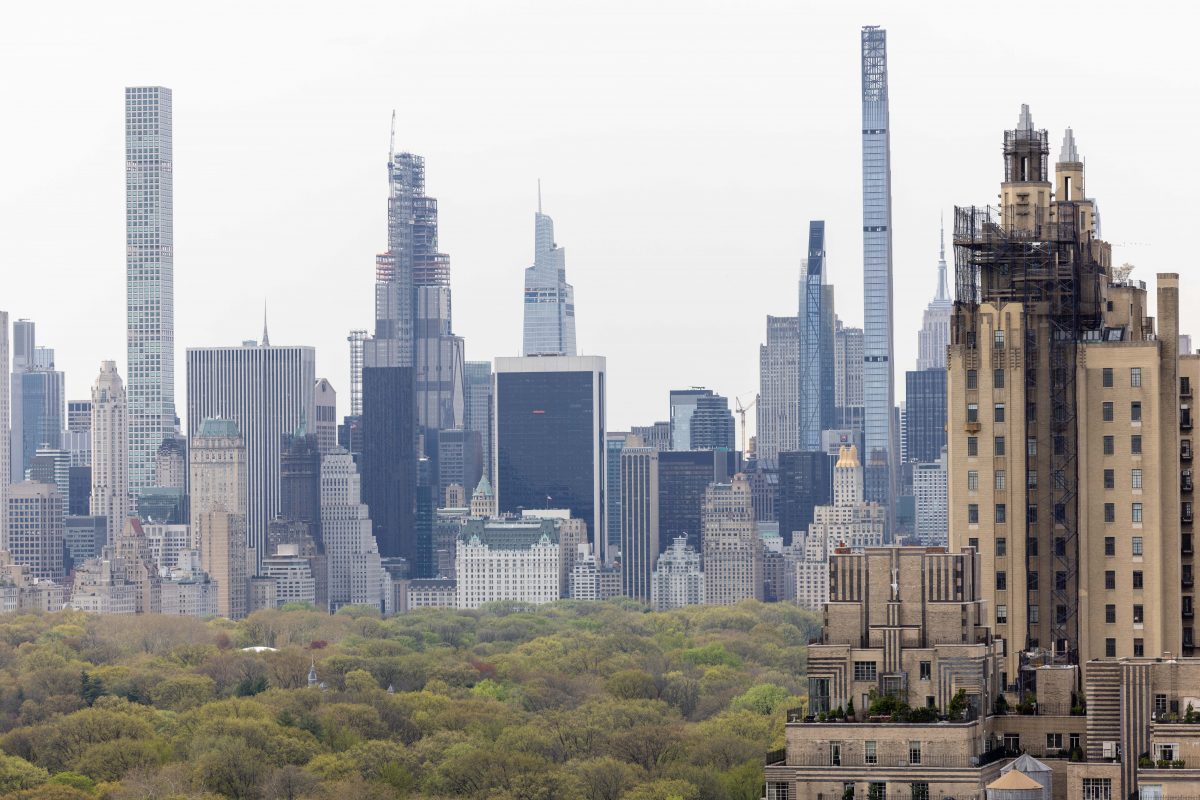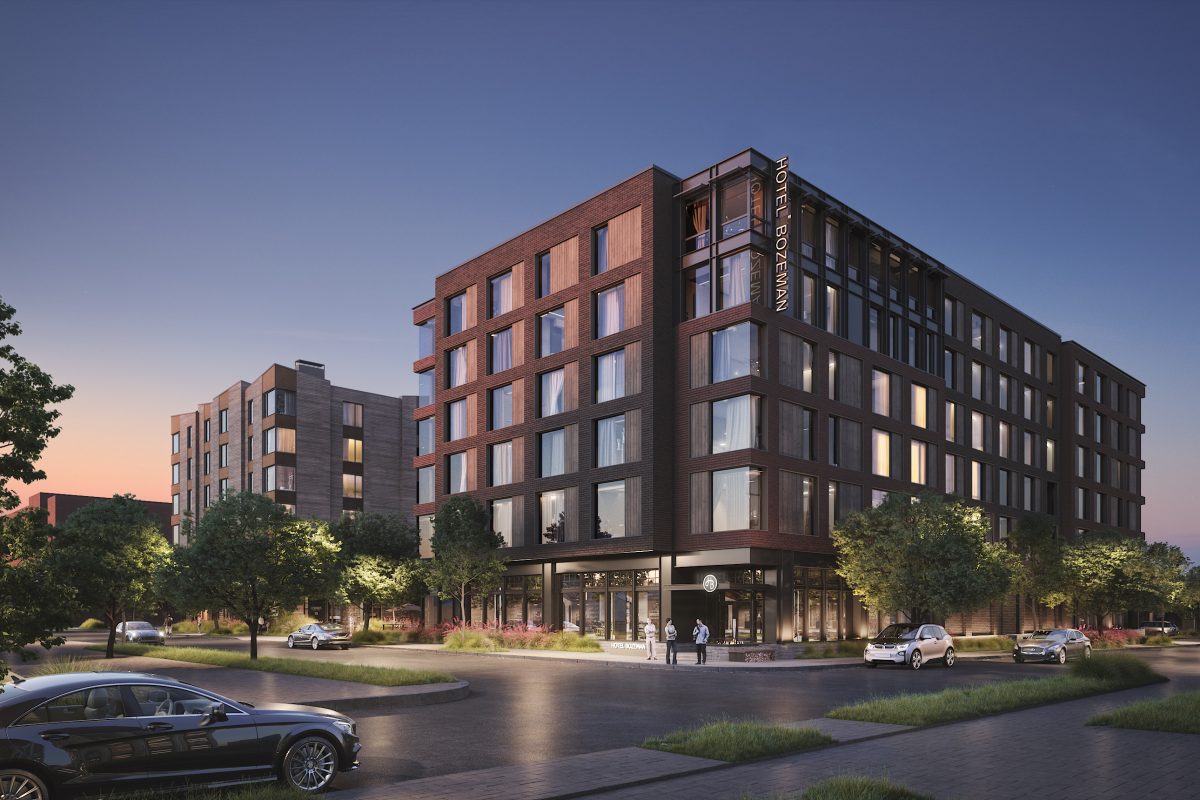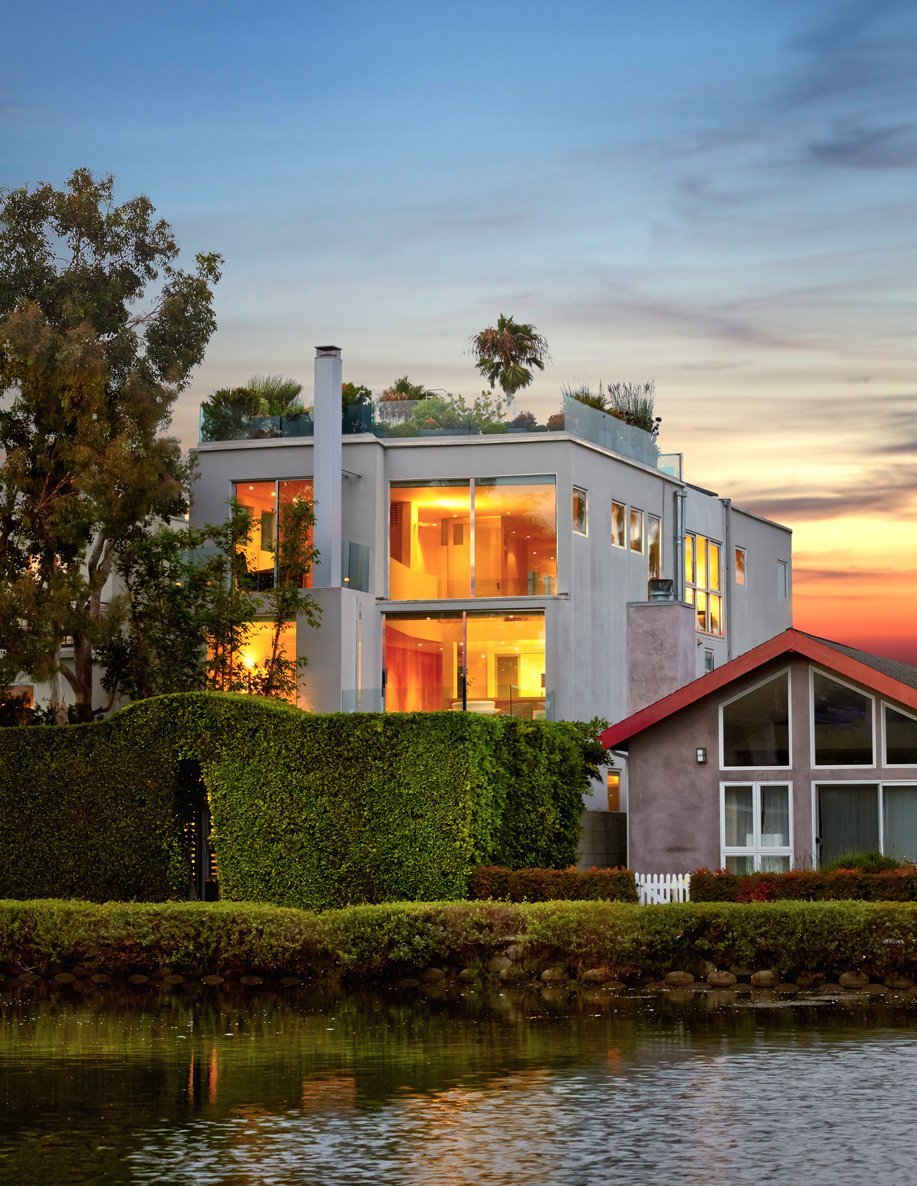 A native Angeleno and Venice local, architect David Hertz is a pioneering figure in L.A.’s environmental design movement, recognized for his use of passive solar energy, natural light, and natural ventilation in his many custom residential projects. Founder and president of the Venice-based architecture and design firm, S.E.A. (Studio of Environmental Architecture), he is the creator of Syndecrete®, the innovative, pre-cast concrete surfacing material, and founder of Skysource, a company that promotes the use of atmospheric water generators as a solution to the world’s water crisis. Among David’s many residential projects is a series of renovations on 2335 Eastern Canal, a stunningly reimagined contemporary home on a coveted stretch of the Venice Canals. Equipped with solar panels and a rooftop garden, the home exemplifies modern waterfront living, with clean, modern lines, plentiful windows, and expansive T-canal views. We recently caught up with David and spoke with him about the home’s renovations, restorative architecture, and his passion for helping solve the world’s water crisis.
A native Angeleno and Venice local, architect David Hertz is a pioneering figure in L.A.’s environmental design movement, recognized for his use of passive solar energy, natural light, and natural ventilation in his many custom residential projects. Founder and president of the Venice-based architecture and design firm, S.E.A. (Studio of Environmental Architecture), he is the creator of Syndecrete®, the innovative, pre-cast concrete surfacing material, and founder of Skysource, a company that promotes the use of atmospheric water generators as a solution to the world’s water crisis. Among David’s many residential projects is a series of renovations on 2335 Eastern Canal, a stunningly reimagined contemporary home on a coveted stretch of the Venice Canals. Equipped with solar panels and a rooftop garden, the home exemplifies modern waterfront living, with clean, modern lines, plentiful windows, and expansive T-canal views. We recently caught up with David and spoke with him about the home’s renovations, restorative architecture, and his passion for helping solve the world’s water crisis.
Tell us about 2335 Eastern Canal. How did the home’s location influence your vision?
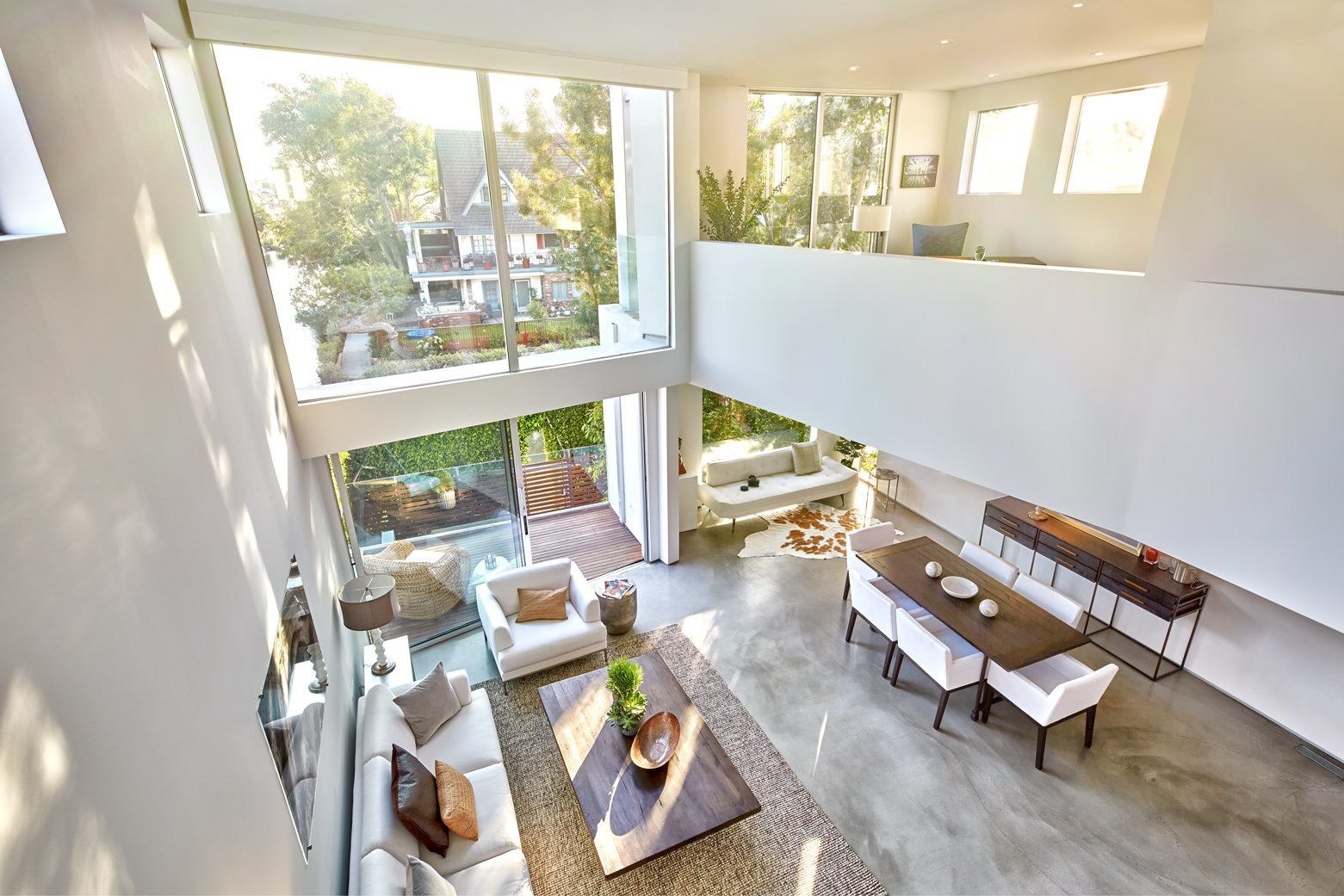 Over the years, I was brought in by two different clients for two separate renovations. The main objective for both projects was to really embrace the home’s location on the canals, which are so iconic to Venice. The home was designed to be efficient mechanically—including radiant heating and solar panels—but also passively, with expansive windows and doors enhancing natural ventilation throughout the house, so the occupant becomes part of the system and always feels that connection to nature. We took great care to take full advantage of the canal views and prevailing ocean breezes. The home has a real connection to the natural environment, from the roof garden to the master suite suspended over the living room, where sliding glass doors open to embrace views from the windows beyond.
Over the years, I was brought in by two different clients for two separate renovations. The main objective for both projects was to really embrace the home’s location on the canals, which are so iconic to Venice. The home was designed to be efficient mechanically—including radiant heating and solar panels—but also passively, with expansive windows and doors enhancing natural ventilation throughout the house, so the occupant becomes part of the system and always feels that connection to nature. We took great care to take full advantage of the canal views and prevailing ocean breezes. The home has a real connection to the natural environment, from the roof garden to the master suite suspended over the living room, where sliding glass doors open to embrace views from the windows beyond.
How did you approach the renovation?
As with all projects, they don’t necessarily start with a preconceived idea; they are site-responsive, and responsive to the needs of the client. The 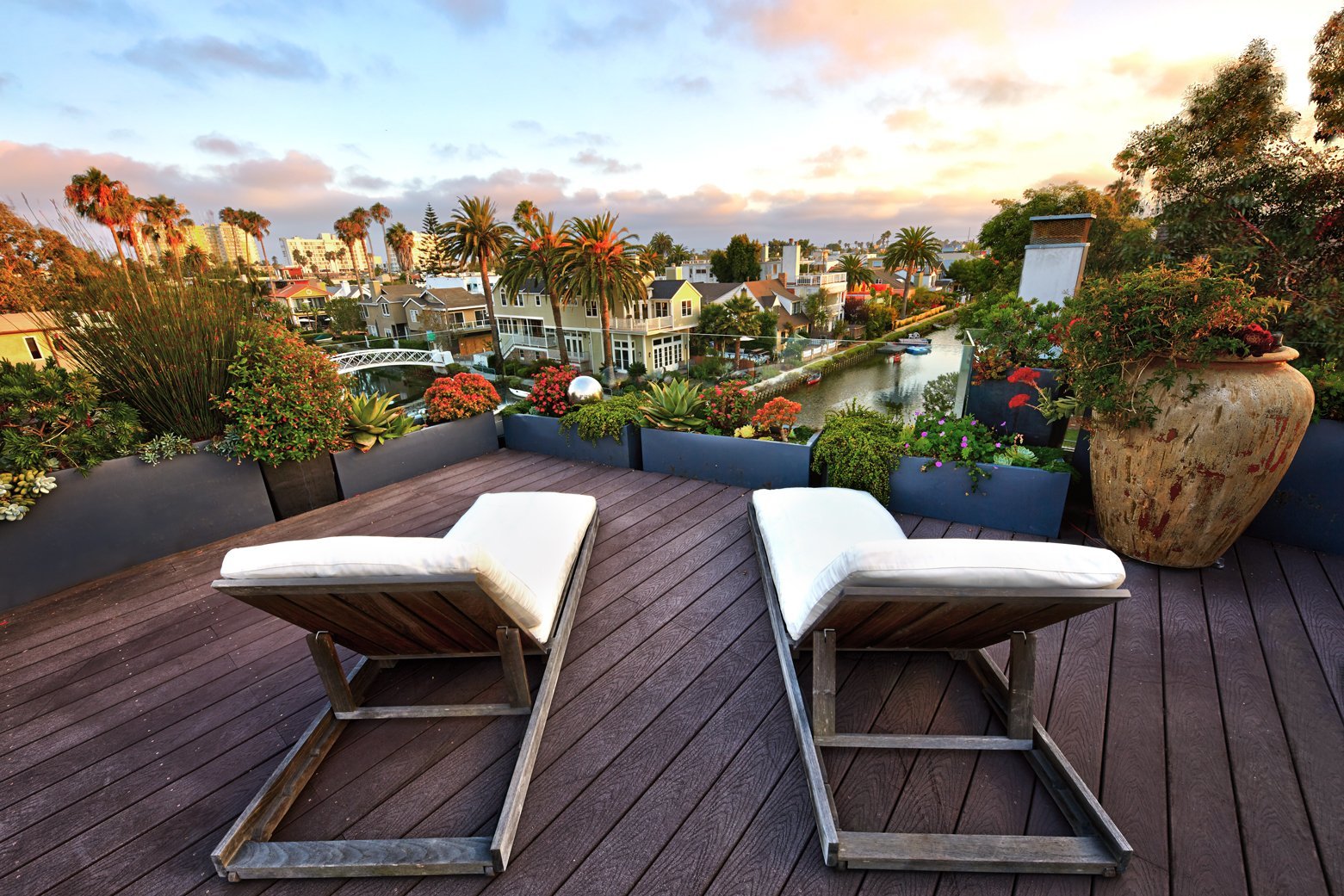 recent renovation was driven by the current owner’s desire for a place to relax between travels and to still feel that connection to the outside without necessarily leaving home. What I was trying to do with Eastern was make a beautifully detailed building while maximizing the home’s living space. We extended the interiors over the front yard, cutting away a big window in the bathroom, and maximized views with expansive windows throughout. The home’s high ceilings, natural light, two-story volumes and roof garden contribute to a really open, organic feeling that lends itself to the Venice lifestyle.
recent renovation was driven by the current owner’s desire for a place to relax between travels and to still feel that connection to the outside without necessarily leaving home. What I was trying to do with Eastern was make a beautifully detailed building while maximizing the home’s living space. We extended the interiors over the front yard, cutting away a big window in the bathroom, and maximized views with expansive windows throughout. The home’s high ceilings, natural light, two-story volumes and roof garden contribute to a really open, organic feeling that lends itself to the Venice lifestyle.
In the short documentary “Precipitating Change,” you mention you have been shifting your focus from sustainability to a more restorative form of architecture. Can you explain how this factors into your work?
I’ve been interested in restorative architecture for some time now. The first example that comes to mind is my work with water; designing buildings that actually generate their own water. In California, we are still very much in a water scarce region. Water is imported from long distances at great cost, and many regions are suffering from water scarcity and water quality issues. I’ve been trying to stay ahead of this with a technology called Skysource, which uses uses solar energy to condense water from the air into water that can be used and saved—which is, in effect, a restorative, rather than sustainable, process. It’s a technology I’m starting to incorporate into all of my new buildings.
What first motivated you to move in this direction from an architectural standpoint?
I’ve been interested in the intersection between the natural and built environment for 30 years, looking at technology, repurposing and radical reuse, such as using the wings of a 747 in the construction of a home in the hills of Malibu. Growing up on the coast I’ve always been aware of water, but when I began to study water globally, I became absolutely fascinated. At any given time, there is more water in our atmosphere than all the rivers on earth. The trouble is we have this centralized concept of large infrastructure projects that tend to transport water long distances and little idea of how to generate water that’s in line with the solar electricity model.
Can you tell us more about the work you’re doing with Skysource?
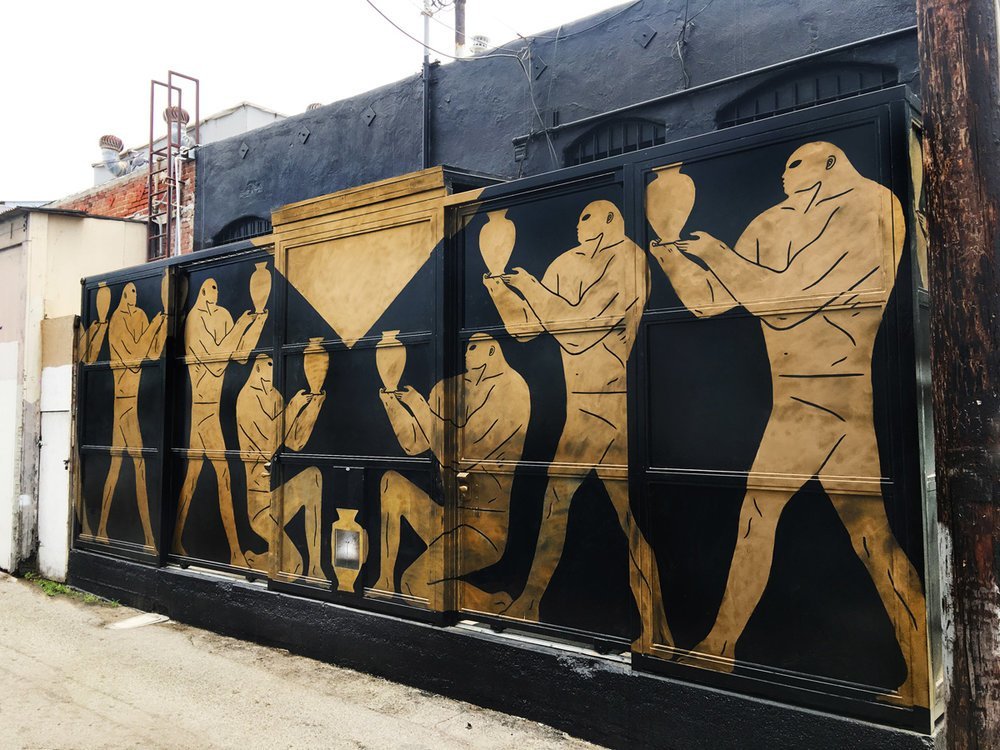 My office is in the epicenter of Venice, and we can generate up to 150 gallons of fresh potable water a day with our Skysource technology. We
My office is in the epicenter of Venice, and we can generate up to 150 gallons of fresh potable water a day with our Skysource technology. We 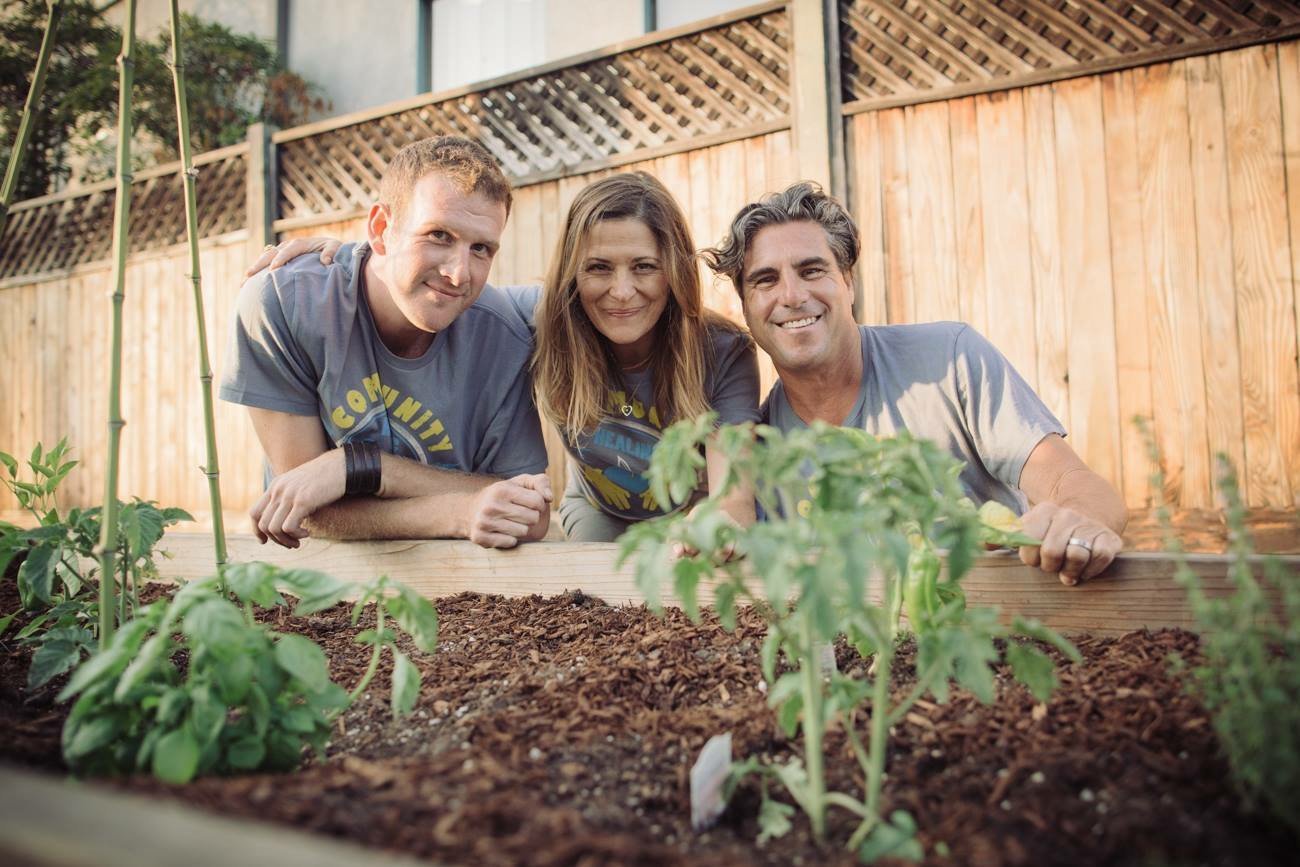 obviously don’t need that much water, so we put in a bottle filling station in the alley, and incorporated that with street art to make an urban well—a Skywell—that provides water to the area’s homeless. We’re in the process of collaborating with artists and repurposing billboards across L.A. to transform into what we call sky forests, which are essentially bamboo forests we’ll use to make water and create this beautiful landscape relief while drivers are stuck in traffic. We also donate water to Community Healing Gardens, a Venice-based nonprofit which has more than 80 urban farm boxes in Venice. We’re looking to take the concept to other disadvantaged communities across L.A. and to third world countries. The water project is perhaps one of the things I’m most excited about because of the implications it has to drastically improve the quality of life for so many people all over the world.
obviously don’t need that much water, so we put in a bottle filling station in the alley, and incorporated that with street art to make an urban well—a Skywell—that provides water to the area’s homeless. We’re in the process of collaborating with artists and repurposing billboards across L.A. to transform into what we call sky forests, which are essentially bamboo forests we’ll use to make water and create this beautiful landscape relief while drivers are stuck in traffic. We also donate water to Community Healing Gardens, a Venice-based nonprofit which has more than 80 urban farm boxes in Venice. We’re looking to take the concept to other disadvantaged communities across L.A. and to third world countries. The water project is perhaps one of the things I’m most excited about because of the implications it has to drastically improve the quality of life for so many people all over the world.
For more information about Skysource, visit its website.

